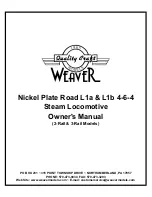
Phoenix
Page 5
Before You Begin Construction
panels with one batch of 9 minute pot life
epoxy. If you have never done vacuum bagging
before, you might want to either do one wing
panel at a time or use a slower setting resin.
Resins such as EZ-Lam, West System and Safe-
T-Poxy are all low viscosity with a 30 to 60
minute pot life. Do not try to apply the skins
with a standard epoxy glue because it will be
difficult to keep the weight down. We use about
one fluid ounce of resin total to bond all four
wing skins to the cores.
For the remainder of the construction, we use 5
and 30 minute epoxies, thin and thick CA as
well as aliphatic resin glues. The instructions
will mention any areas where a specific glue is
required. For most of the construction, use
either aliphatic resin glue (Titebond, PIC Rigid
White Glue etc.) or CA. The CA glues have the
obvious advantage of a fast cure time, but we
find the aliphatics easier to sand, not all that
much slower to use and non-toxic. Do not use
standard CA glue near the foam cores! Take
your pick. In any case, be sure to use a good
quality, fresh glue to build your Phoenix.
Radio System
T
O get good performance, you should use a
moderately light weight radio system in
Phoenix. For the aileron servos, only micro ser-
vos will fit in the wing. We have used Futaba S-
133’s in the prototypes with good results.
Avoid servos with less than 20 inch-ounces of
torque. We have also used S-133’s for the eleva-
tor and rudder, although there is room for a
slightly larger servo. Extra room for a standard
servo can be made by deleting the rudder
servo and only using a servo for the elevator.
This does not greatly impact the maneuverabil-
ity of Phoenix, but using properly coordinated
rudder and aileron controls does make a signif-
icant improvement in thermalling performance.
Therefore, we do recommend a servo for both
rudder and elevator.
For the remainder of the radio gear, we have
used either a standard receiver and a 150 mAh
battery or a small receiver and a 275 mAh bat-
tery. Both combinations weigh about the same.
The prototypes would balance properly with
either of these radio options, without any addi-
tional nose weight. If your Phoenix comes out
nose heavy, try not to add weight to the tail,
but put in a lighter radio and enjoy the extra
performance.
Finishing
P
HOENIX is not the airplane to try out your
latest 57 coat, hand-rubbed super finish!
Remember that each extra ounce is going to
cost you 10% in performance! All of the proto-
types were covered with iron-on film coverings.
We have found that the different coverings
have different characteristics. A high tempera-
ture covering, such as MonoKote™ or Ultra-
cote™ should be used on the bottom of the tail
since it is close to the rocket exhaust. Lower
temperature coverings can become loose or
bubble due to the high heat in this area.
Regardless of the covering used on the wings,
make sure that there aren't any wrinkles or
bubbles, because they cause an increase in
boost drag. Be especially careful to avoid wrin-
kles near the leading edge.
Finally, applying striping tape to the wing can
also hurt the performance. If you really have to
put on the striping, try flying your model first.
If you notice a loss of performance when you
put the tape on, then you have to decide if you
want the performance or the looks.
Since Phoenix can be launched to high alti-
tudes, good visibility is important. We have
found that very dark colors are best for the
bottom of the wing. We also put a fluorescent
yellow stripe on the bottom for contrast. The
upper surface can be any colors you want, but
should be different from the bottom of the air-
plane.








































